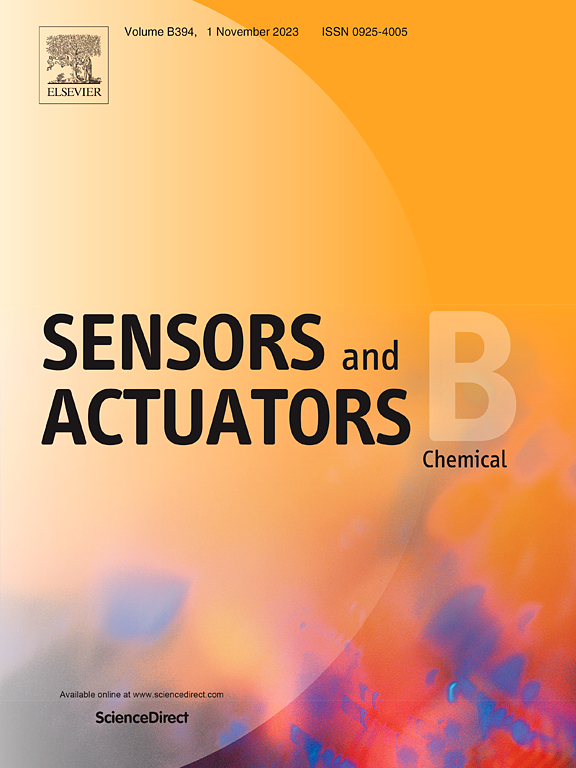基于ni掺杂Co3O4光电阴极的自供电光电传感阵列用于环境污染物邻苯二甲酸二丁酯的高通量检测
IF 3.7
1区 化学
Q1 CHEMISTRY, ANALYTICAL
引用次数: 0
摘要
本文以cd /CdSySe1-y修饰的氧化铟锡(ITO)电极为光阳极增强阴极信号,以Ni-Co3O4修饰的ITO电极阵列为光电阴极,设计了一种双电极自供电的光电电化学(PEC)传感器阵列。同时,Au@Cu3SnS4作为抗体标记物,实现邻苯二甲酸二丁酯(DBP)可寻址的高通量竞争性免疫分析。这种双电极模式具有良好的抗干扰能力。实验过程中采用的自校准策略进一步提高了结果的准确性。在最佳实验条件下,所构建的自供电PEC传感器阵列在5 × 10−5 ~ 5 ng mL−1的DBP浓度范围内表现出满意的线性关系,检出限为10.1 fg mL−1 (S/N = 3)。实验结果表明,该PEC传感器阵列具有显著的稳定性、选择性和可重复性,为识别环境污染物提供了一种创新的方法。本文章由计算机程序翻译,如有差异,请以英文原文为准。
A self-powered photoelectrochemical sensing array based on Ni-doped Co3O4 photocathode for high-throughput detection of environmental pollutant dibutyl phthalate
This paper designs a dual-electrode self-powered photoelectrochemical (PEC) sensor array based on CdS/CdSySe1-y modified indium tin oxide (ITO) electrode as the photoanode to enhance the cathode signal and Ni-Co3O4 modified ITO electrode arrays as the photocathode. Meanwhile, Au@Cu3SnS4 as the antibody marker, achieving addressable high-throughput competitive immunoassays of dibutyl phthalate (DBP). This dual-electrode mode exhibits good anti-interference capability. The self-calibration strategy used during the experiment further enhanced the accuracy of the results. Under optimal experimental conditions, the constructed self-powered PEC sensor array demonstrated a satisfactory linear relationship in the DBP concentration range of 5 × 10−5 ∼ 5 ng mL−1, with a detection limit of 10.1 fg mL−1 (S/N = 3). The experimental findings suggested that this PEC sensor array exhibits remarkable stability, selectivity and reproducibility, offering an innovative approach for identifying environmental contaminants.
求助全文
通过发布文献求助,成功后即可免费获取论文全文。
去求助
来源期刊

Sensors and Actuators B: Chemical
工程技术-电化学
CiteScore
14.60
自引率
11.90%
发文量
1776
审稿时长
3.2 months
期刊介绍:
Sensors & Actuators, B: Chemical is an international journal focused on the research and development of chemical transducers. It covers chemical sensors and biosensors, chemical actuators, and analytical microsystems. The journal is interdisciplinary, aiming to publish original works showcasing substantial advancements beyond the current state of the art in these fields, with practical applicability to solving meaningful analytical problems. Review articles are accepted by invitation from an Editor of the journal.
 求助内容:
求助内容: 应助结果提醒方式:
应助结果提醒方式:


